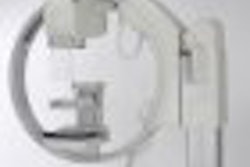Newly trained female radiologists tend to have higher false-positive (FP) rates when reading mammographic films, although these rates are still in line with overall FP trends, according to investigators from the University of Texas Medical Branch in Galveston.
Alai Tan, Ph.D., and colleagues conducted a population-based assessment on radiologist variation in FP rates in mammography reading. Tan is from the department of preventive medicine and community health. Her co-authors are from the department of internal medicine and the university's Sealy Center on Aging.
They noted that previous studies on factors that affect reader accuracy have either focused on patient characteristics or have been done in the setting of a structured test with a limited number of radiologists.
"Few studies have assessed variability in mammography performance among radiologists in real practice," the researchers stated. In addition, "these studies include a small number of radiologists from relatively small geographic areas. In the present study, we used a population-based dataset, the 5% noncancer sample from the SEER-Medicare database during 1998-1999" (Breast Cancer Research and Treatment, September 21, 2006).
Their study sample consisted of screened female Medicare beneficiaries (65 and older) who had a screening mammogram claim (CPT 76092) in the given time period. Women with any procedures related to breast cancer or a diagnosis of breast cancer in 2000 were excluded, as were women whose claims could not be linked to a unique radiologist. Information on the readers was gleaned from the American Medical Association Physician Masterfile.
From the SEER-Medicare database, 21,576 women with 27,394 screening mammograms were identified. These films were interpreted by 2,448 radiologists. Reader characteristics included age, year of graduation from medical school, board certification, type of practice, and volume of mammograms. Ultimately, only radiologists who interpreted 10 or more screening mammograms were included in the final analysis of 1,067 readers.
"The observed radiologist false-positive rate is computed as the number of false positives divided by total number of screening mammograms a radiologist conducted in breast cancer-free women," the authors wrote.
According to the results, the overall FP rate for screening mammography was 6.3%. The FP rates were generally higher among younger women, nonblack women, and women in certain SEER areas.
The radiologists' observed FP rates varied from 1.5% to 24.1%. The majority of readers (70.4%) were between the ages of 40 and 59, male (84%), board-certified (91.3%), and at least 10 years postgraduation (64.6%). More than 70% of the readers had observed FP rates of less than 10%, the authors reported.
"Radiologist gender and year since graduation were significantly associated with false-positive rates.... Female radiologists had significantly higher false-positive rates than male radiologists, and radiologists with a longer period since graduation had lower false-positive rates," they stated.
However, "(our) overall 6.3% false-positive rate estimated from this study appears reasonable (as previous) population-based studies reported a range of 2.7% to 13.8%," they stressed.
Tan's group suggested some possible reasons behind the trend: female medical students entered the specialty more recently relative to male radiologists; current training emphasizes sensitivity over specificity, resulting in fewer missed cancers; and female radiologists are more meticulous than male radiologists, leading to a higher FP rate but fewer missed cancers.
By Shalmali Pal
AuntMinnie.com staff writer
December 13, 2006
Related Reading
Physicians show bias for breast cancer screening referral, December 8, 2006
CAD interval change analysis boosts mammogram accuracy, July 7, 2006
In reading mammograms, more is better, March 7, 2005
American recall rates following mammography higher than in England, October 22, 2003
Copyright © 2006 AuntMinnie.com



















